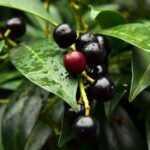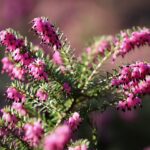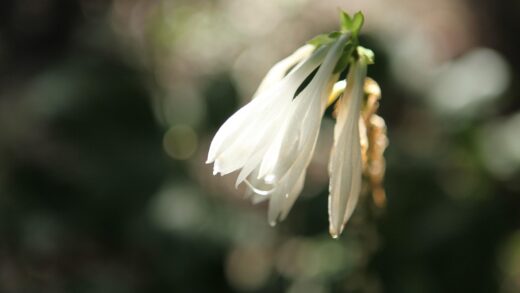Understanding the specific water requirements of the German iris is fundamental to its cultivation, as improper irrigation is one of the most common reasons for failure. These plants are structurally adapted for periods of dryness, storing water and nutrients in their thick, fleshy rhizomes. Consequently, they have a deep-seated intolerance for consistently wet or waterlogged soil, which makes them highly susceptible to rhizome rot. The core principle of watering German irises is to provide deep, infrequent irrigation only when necessary, allowing the soil to dry out thoroughly between applications. This approach mimics the conditions of their native habitats and respects their natural cycle of growth and dormancy.
The life stage of the plant significantly influences its water needs. Newly planted or recently divided irises require the most consistent attention to watering. During this establishment phase, which typically occurs in late summer and early autumn, the soil should be kept moderately moist to encourage the development of a strong root system before winter. This might mean providing about two to three centimeters of water per week if rainfall is absent. However, even at this critical stage, it is crucial to avoid saturation and to ensure the soil has excellent drainage to prevent the new rhizomes from rotting before they have a chance to grow.
Once an iris clump is well-established, usually by its second year, it becomes remarkably drought-tolerant. In many temperate climates, natural rainfall is often sufficient to meet the moisture needs of mature plants for most of the year. The exception is during extended periods of drought, particularly in the six to eight-week period after flowering. This post-bloom phase is when the plant is actively growing new rhizomes and forming the flower buds for the following season, and a lack of water at this time can compromise future performance. A single, deep soaking during such a dry spell can be highly beneficial.
The transition into summer dormancy is a critical period where watering practices must be adjusted. As temperatures rise and the plant’s growth slows, its water uptake decreases significantly. Continuing to provide regular water during this time is a recipe for disaster, as warm, wet soil creates the perfect breeding ground for bacterial soft rot. The ability to recognize this shift and withhold water is a key skill in successful iris culture. The foliage may look a little stressed during the heat of summer, but this is a natural response, and the resilient rhizome will endure until conditions improve.
The unique water needs of rhizomatous irises
The German iris’s water needs are dictated by the anatomy of its rhizome. This modified stem is a highly efficient storage organ, designed to sustain the plant through periods of environmental stress, including drought. It holds the necessary water and carbohydrates to initiate new growth and survive until more favorable conditions return. This inherent resilience means that the plant is not adapted to, and in fact is harmed by, an environment of constant moisture. The surface of the rhizome needs to be able to breathe and stay relatively dry to ward off pathogenic fungi and bacteria that thrive in dampness.
The root system of an iris also plays a role in its water uptake and preferences. The plant produces two types of roots: small, fibrous feeder roots that absorb moisture and nutrients, and larger, fleshy anchor roots that help stabilize the plant. While the feeder roots require access to some soil moisture, the entire system is designed to function in a well-aerated soil. When the soil becomes waterlogged, the air pockets are filled with water, depriving the roots of the oxygen they need to survive and function properly. This leads to root death and creates an entry point for rot-causing organisms to attack the rhizome.
The annual growth cycle creates distinct periods of higher and lower water demand. The highest demand occurs in the spring, during the rapid development of foliage and flower stalks, and continues for a period after flowering when the plant is focused on vegetative reproduction and nutrient storage in new rhizomes. In contrast, the lowest water demand occurs during the heat of mid-summer, when the plant enters a natural semi-dormant state. A secondary, moderate demand for water occurs in the autumn if conditions are dry, as the plant grows new roots to anchor itself for the winter. Understanding this rhythm is essential for providing water when it is most beneficial and withholding it when it could be harmful.
Ultimately, the key to meeting the unique water needs of rhizomatous irises is to shift one’s mindset from a schedule-based watering routine to an observation-based one. Instead of watering every few days, the soil should be physically checked for dryness. By inserting a finger or a small trowel into the soil near the clump, one can accurately gauge the moisture level. Water should only be applied when the top 5-7 centimeters of soil are completely dry to the touch. This simple, hands-on approach is the most effective way to prevent the devastating effects of overwatering.
Irrigation during the establishment phase
The period immediately following the planting or transplanting of German iris rhizomes is the most critical time for irrigation. During this establishment phase, the rhizome’s primary goal is to produce a new network of feeder roots to anchor itself and begin absorbing water and nutrients from the soil. Consistent and appropriate moisture is the catalyst for this process. Without adequate water, root development will be slow and stunted, leaving the plant vulnerable and poorly prepared for the coming winter. Therefore, a dedicated watering regimen for the first four to six weeks is non-negotiable.
Upon planting, each new rhizome should be watered in deeply and thoroughly. This initial soaking serves to settle the soil around the delicate roots, ensuring good contact and eliminating air pockets. Following this, a watering schedule should be adopted that keeps the soil moderately moist but never waterlogged. A general guideline is to provide a deep watering, equivalent to about 2.5 centimeters of rain, once a week if nature does not provide it. The goal is to moisten the entire root zone, encouraging roots to grow downwards, which will create a more resilient plant in the long term.
It is crucial to monitor the soil’s condition rather than watering on a blind schedule. The frequency of irrigation will depend heavily on factors such as soil type, temperature, and wind. A sandy soil will dry out much faster than a clay-based soil and will require more frequent watering. The best method to determine if watering is needed is to feel the soil a few centimeters below the surface. If it feels dry to the touch, it is time to water again. If it still feels cool and moist, it is best to wait another day or two to avoid over-saturating the soil.
As autumn progresses and temperatures begin to cool, the frequency of watering should be gradually reduced. The plant’s growth will slow as it prepares for winter dormancy, and its water requirements will decrease accordingly. The goal is for the soil to be relatively dry heading into the winter. Consistently wet soil during the winter months can lead to rot, especially during periods of freezing and thawing. This careful management of water during the establishment phase sets the foundation for a healthy, well-rooted iris that will emerge with vigor in the spring.
Watering mature iris clumps
Once a German iris clump has been in the ground for a full year and has successfully gone through a blooming cycle, it is considered established. At this point, its water requirements decrease dramatically, and it becomes a truly low-maintenance perennial. For mature irises, the primary source of water should be natural rainfall. In many regions, the precipitation received throughout the year is perfectly adequate to sustain a healthy and productive iris bed without any need for supplemental irrigation from the gardener. This drought tolerance is one of the most appealing characteristics of the plant.
Supplemental watering for mature clumps should be reserved for periods of significant and prolonged drought. The most important time to monitor for drought stress is in the late spring and early summer, immediately after the flowering period. During these crucial weeks, the plant is channeling its energy into developing the new rhizomes that will produce the following year’s flowers. A severe lack of water at this stage can result in smaller rhizomes and fewer flower buds. If there has been no significant rainfall for two to three weeks during this period, a single, deep soaking is highly beneficial.
When it becomes necessary to water an established clump, the method of application is important. It is always preferable to water deeply and infrequently rather than providing shallow, frequent sprinklings. A deep watering encourages the roots to grow further down into the soil, where they are better protected from heat and surface drying. Use a soaker hose or a watering wand to apply water directly to the soil at the base of the plants, avoiding the foliage as much as possible. This minimizes the risk of fungal diseases and ensures the water gets to where it is needed most.
During the peak heat of mid to late summer, it is imperative to resist the urge to water mature irises, even if other plants in the garden are wilting. This is their natural period of semi-dormancy, and their physiological processes have slowed down. The rhizomes are particularly vulnerable to rot when subjected to high heat and excessive moisture simultaneously. Unless the plants show extreme signs of stress, such as severe shriveling of the foliage, it is best to let them rest and wait for cooler temperatures and autumn rains to revive them. Trust in their natural resilience.
Common watering mistakes and their consequences
By far the most common and damaging watering mistake made with German irises is overwatering. This often stems from a well-intentioned but misguided belief that all garden plants need to be kept consistently moist. For irises, excessive moisture displaces oxygen in the soil, suffocating the roots and creating an anaerobic environment where rot-causing bacteria and fungi thrive. The most devastating consequence is bacterial soft rot, a disease that can turn a firm, healthy rhizome into a foul-smelling, mushy mass in a very short period. Once soft rot takes hold, it can quickly spread and destroy an entire clump.
Another frequent error is shallow, frequent watering. Lightly sprinkling the soil surface every day or two does very little to benefit the plant. This practice encourages the development of a shallow root system, as the roots have no incentive to grow deeper in search of moisture. A shallowly rooted plant is much more susceptible to drought stress and heat damage, and is less stable in the ground. Furthermore, this method often keeps the base of the plant and the soil surface consistently damp, which can promote fungal diseases and create an ideal habitat for pests like slugs and snails.
Watering at the wrong time of day is a third common mistake. Using overhead sprinklers or watering the foliage late in the evening means that the leaves will remain wet for an extended period overnight. This prolonged dampness creates the perfect conditions for the germination and spread of fungal spores, leading to diseases like fungal leaf spot, which manifests as small, discolored lesions on the leaves. While leaf spot is not usually fatal, a severe infection can reduce the plant’s photosynthetic capacity, weakening it over time. The best practice is always to water early in the morning, so the foliage has ample time to dry before nightfall.
Finally, a critical error is failing to adjust watering practices to the season and the plant’s life cycle. Treating an iris the same way in August as in May is a fundamental misunderstanding of its needs. Continuing a spring watering schedule into the summer dormant period is a primary cause of rot. Similarly, watering heavily late in the autumn can lead to saturated soil that freezes and thaws, potentially heaving the rhizomes out of the ground or causing them to rot over the winter. The successful gardener adapts their irrigation practices in harmony with the changing seasons and the clear signals from the plant.


















